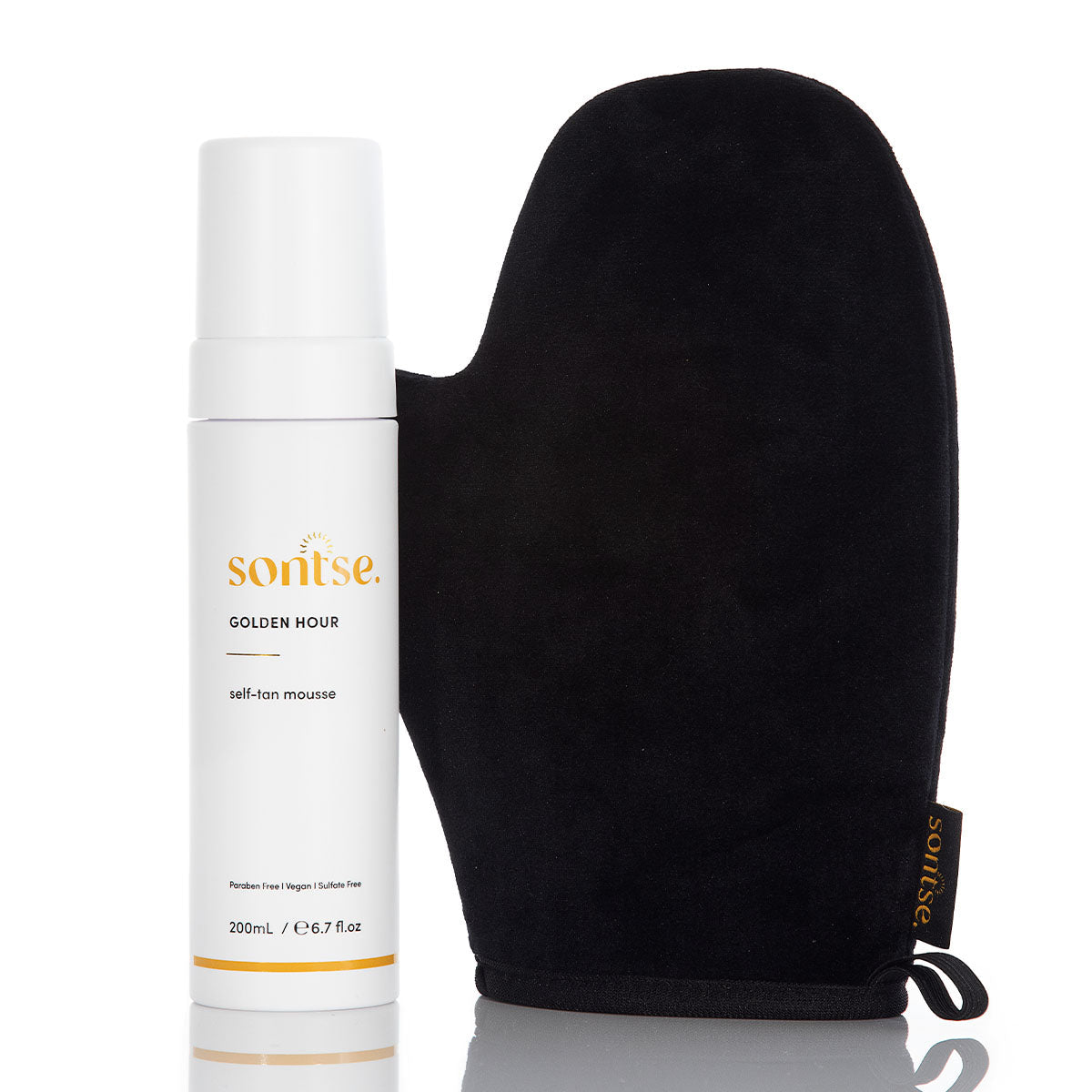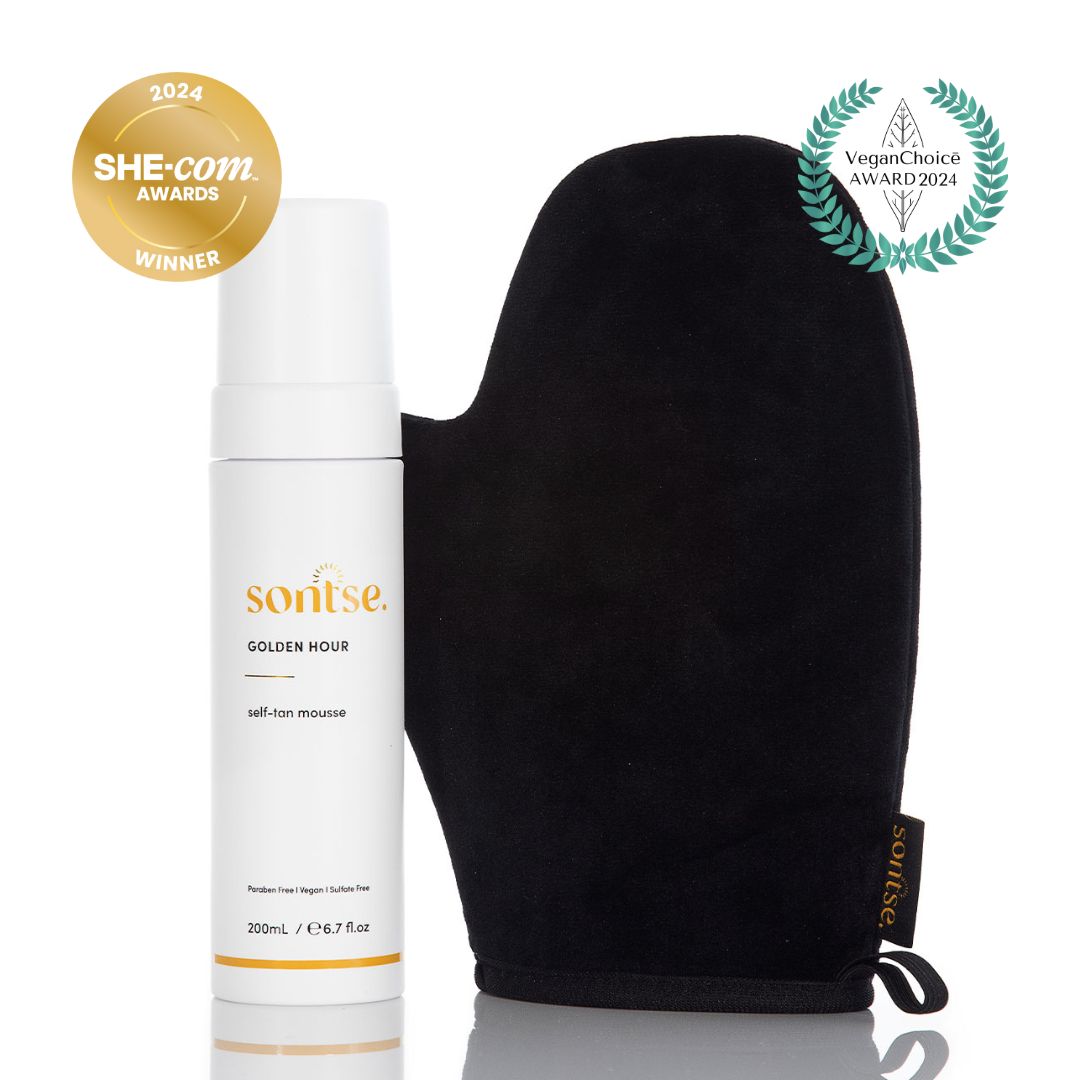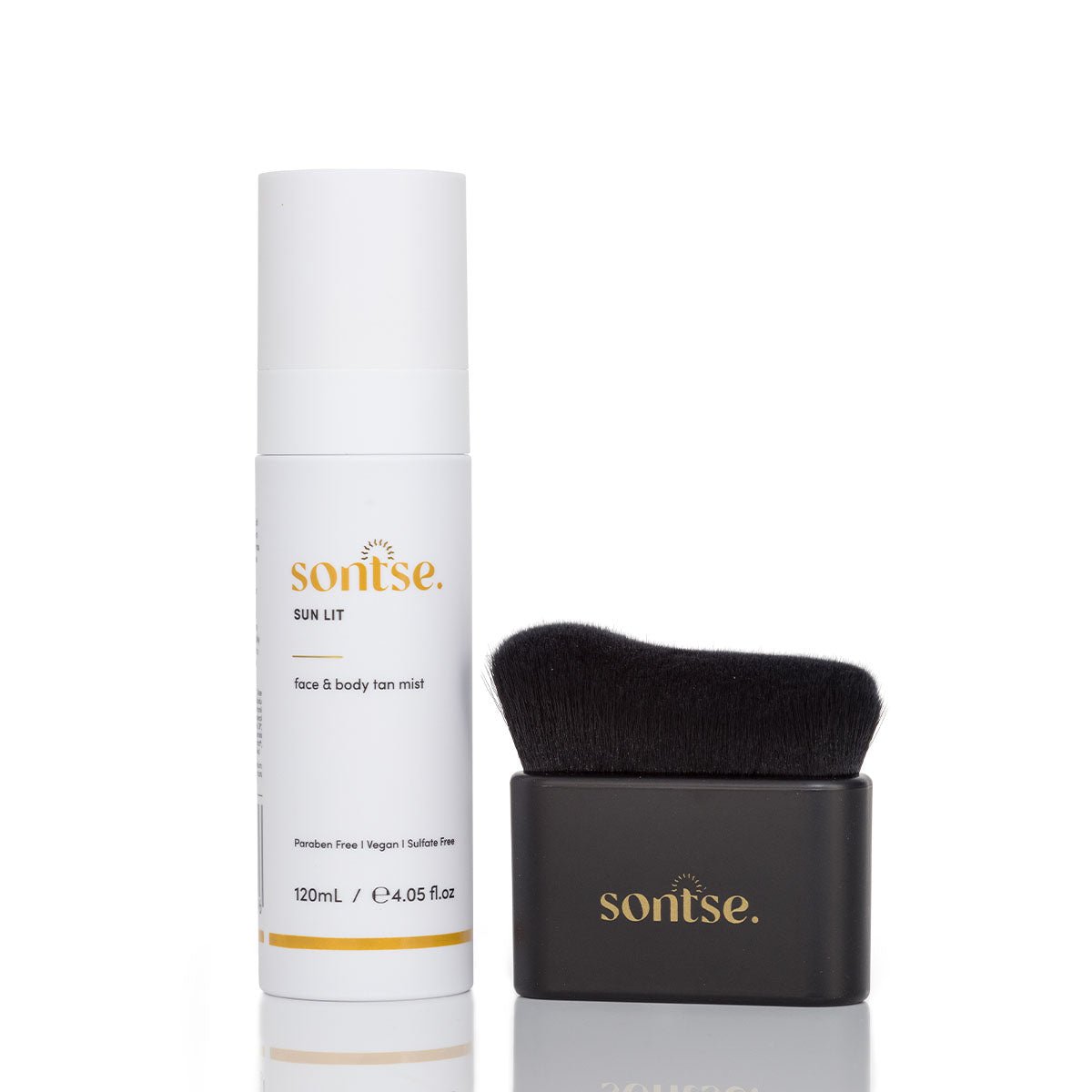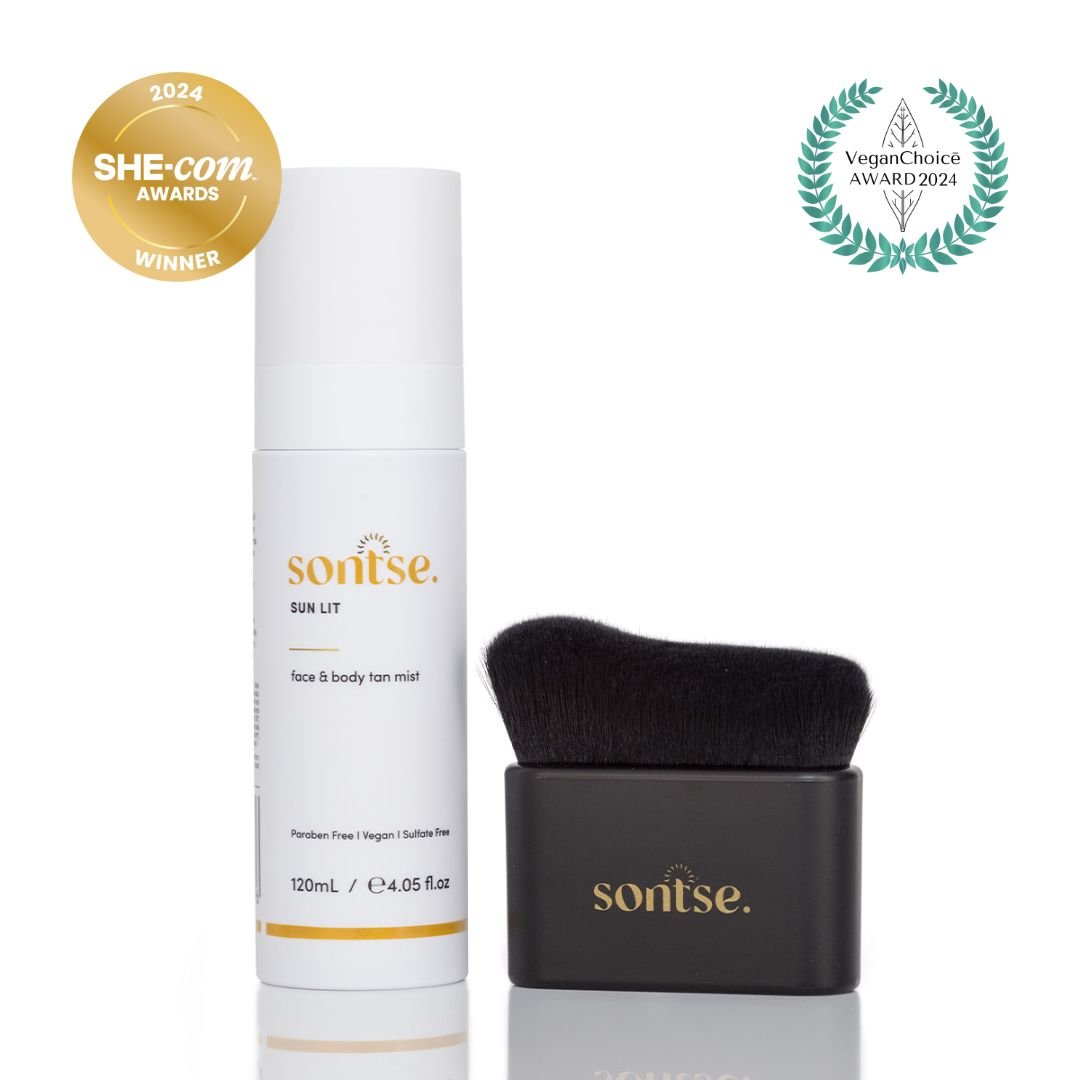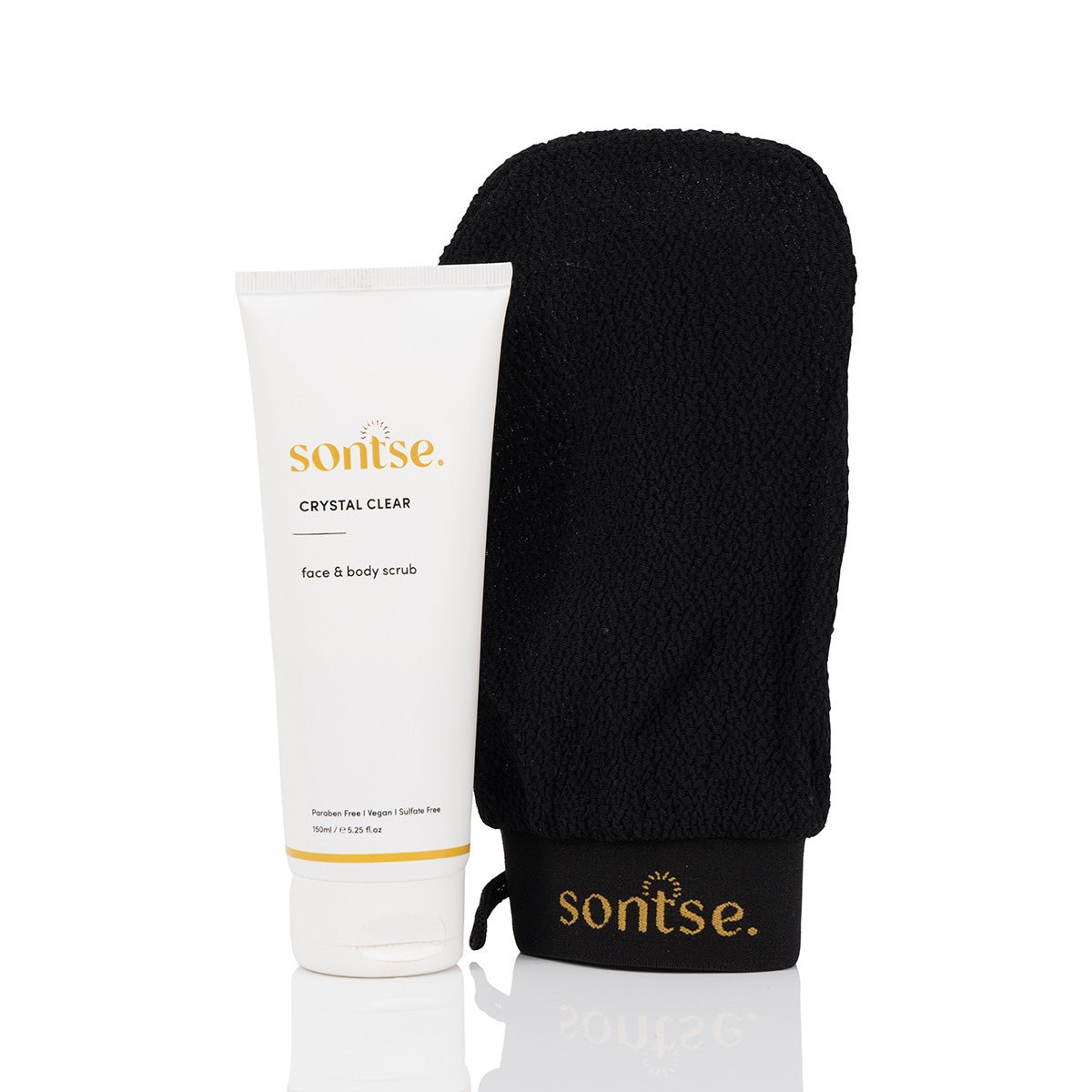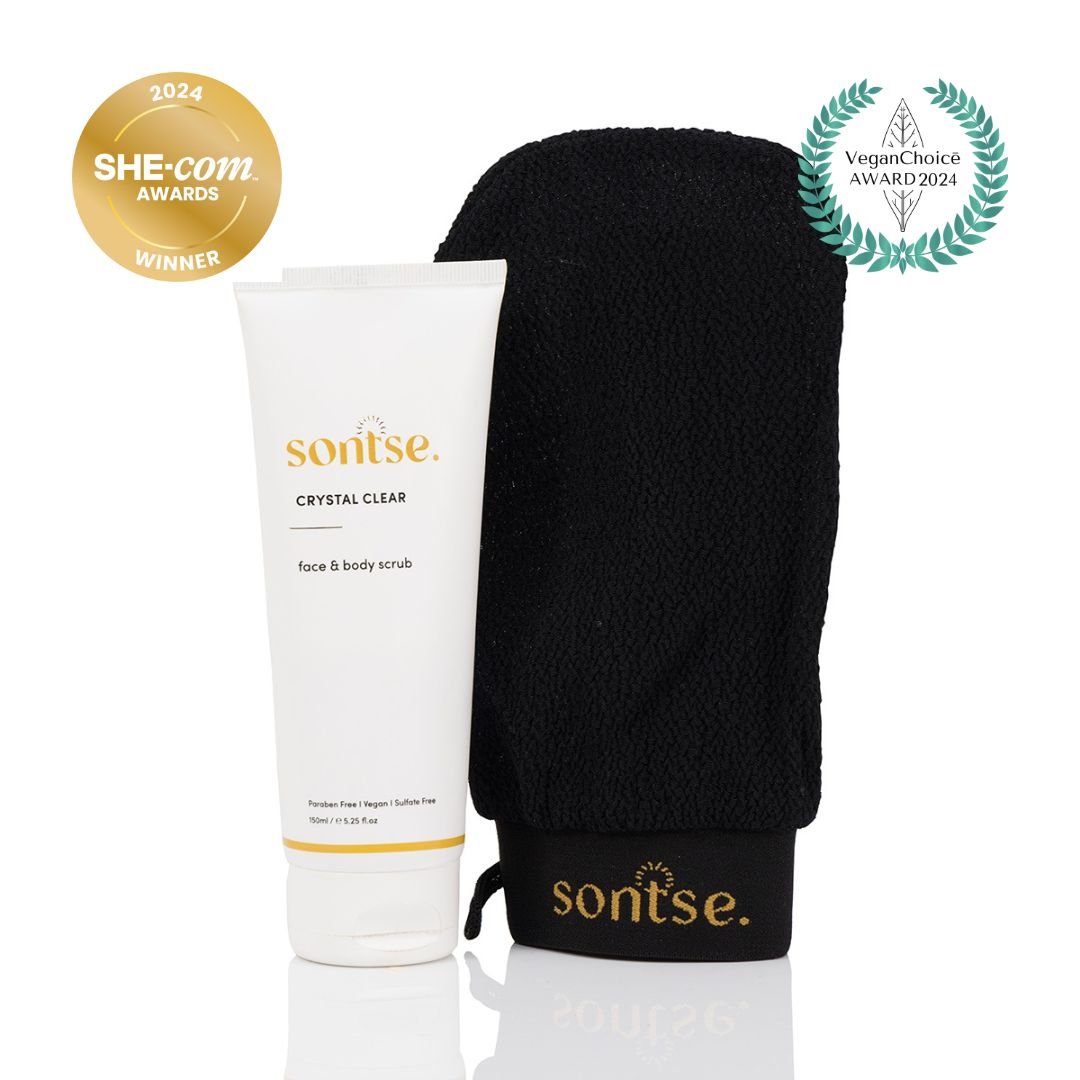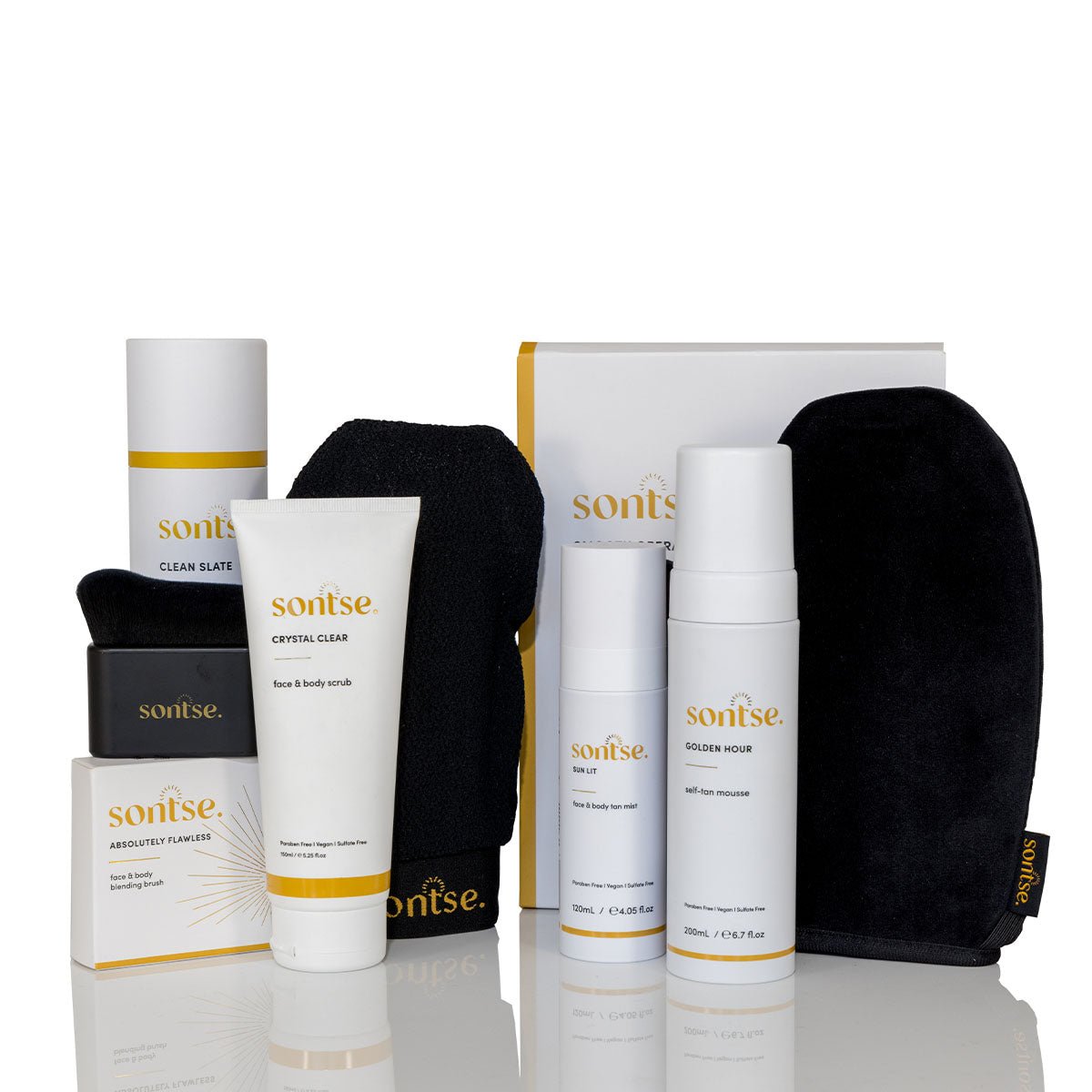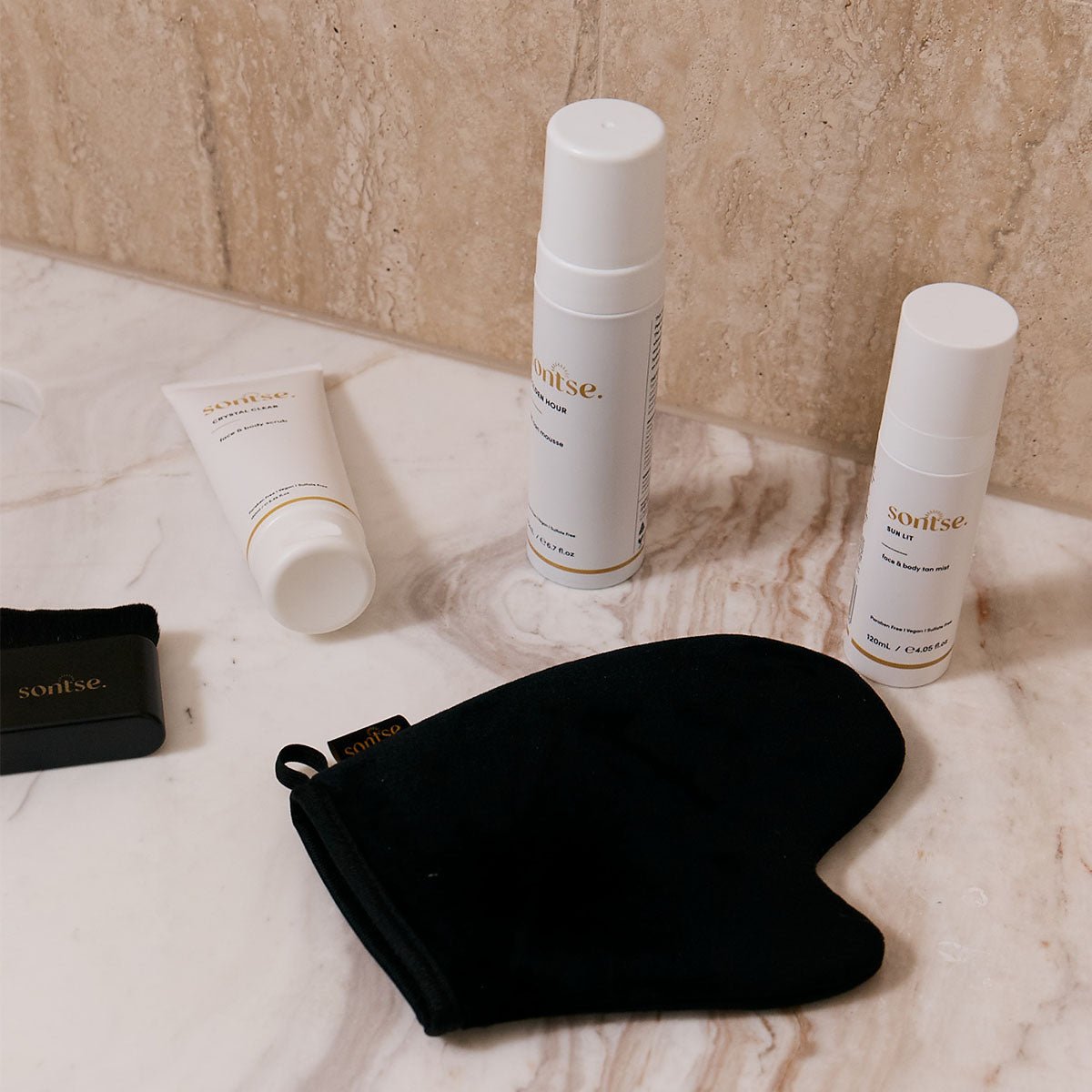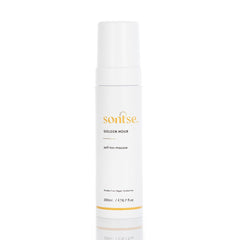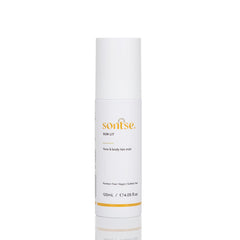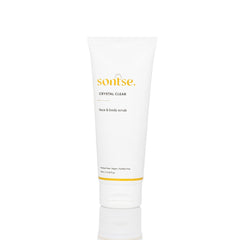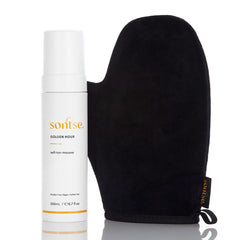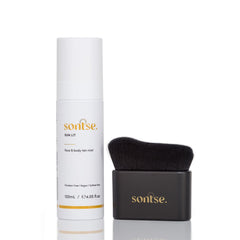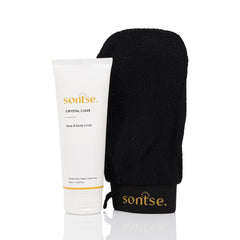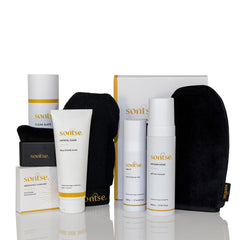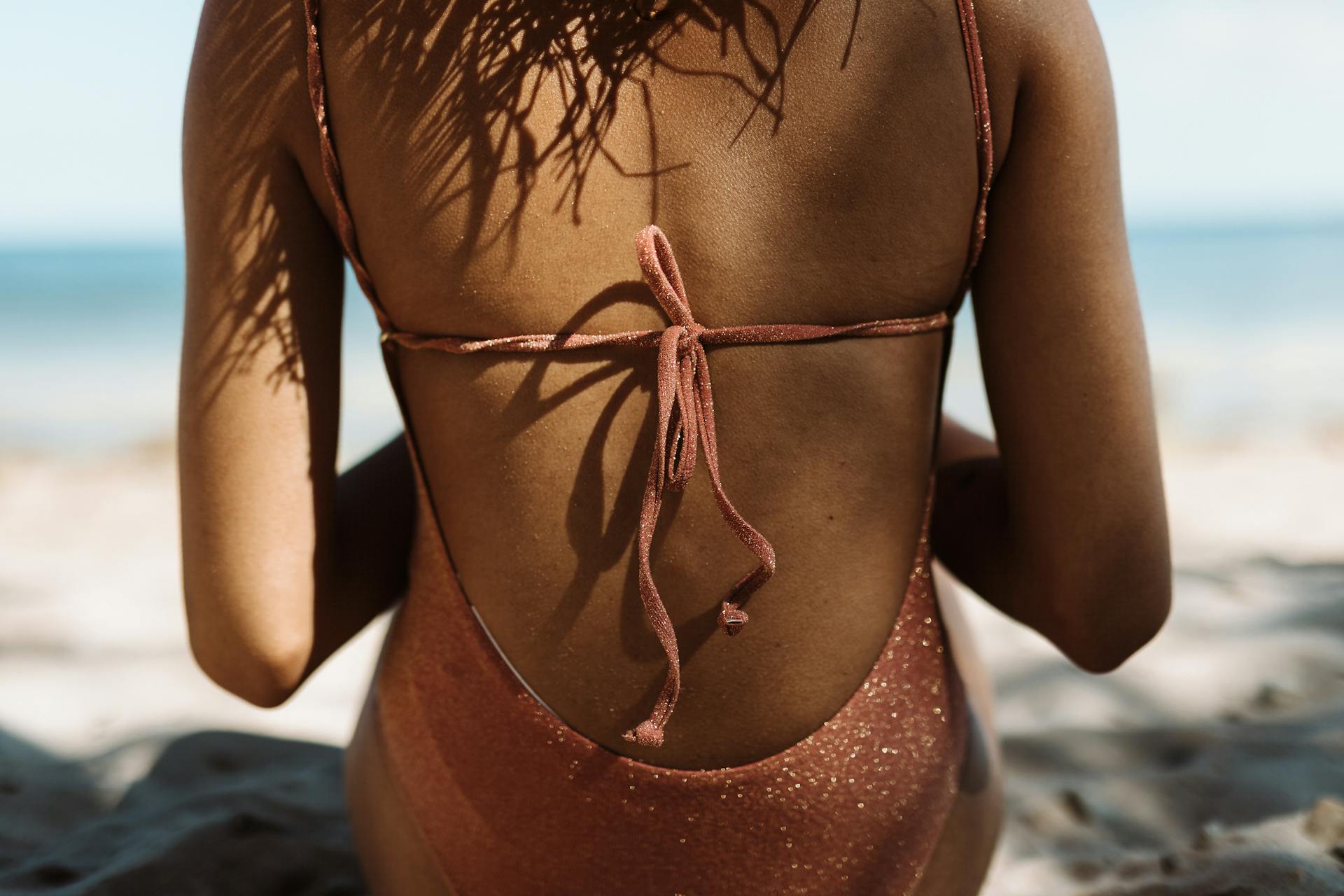Sunburn vs Tan: What's Really Happening To Your Skin
Tanning vs sunburn, is one really safer than the other? Despite what many of us have been led to believe, a sunburn and a tan are actually two different responses to the same problem: UV radiation damage.
The Skin Cancer Foundation (2023) defines sunburn as "an inflammatory reaction to ultraviolet (UV) radiation damage to the skin's outermost layers." This damage can alter DNA within skin cells, potentially leading to serious skin health issues down the track.
When your skin is exposed to UV rays, it responds by producing melanin – the pigment that gives your skin its natural colour. This is your body's way of trying to protect itself from further damage.
For those who naturally have more melanin, this often results in a tan. But for those with less melanin (typically those with lighter skin tones), the skin can't produce enough protective pigment quickly enough, resulting in inflammation and more obvious damage – what we know as sunburn.
But here’s the thing:
Queensland Health (2023) explains it succinctly:
"Tanning triggers the body's defence system, producing extra melanin to try to protect skin cells from damage. So, a tan is actually a sign that skin cells are in trauma".
Simply put, whether you tan or burn depends largely on your skin type, but both are signs of skin damage.
We recently wrote a whole article in our journal about the 5 different skin types to help you learn more about your own skin and how it responds to the sun. Unfortunately for those with naturally darker skin tones, it’s easier to assume that you are less susceptible to sun damage, but the facts suggest that this simply isn’t true.
Can You Turn a Sunburn Into a Tan?
The short answer? Not exactly.
Many women hold onto the belief that if they just push through the pain of a sunburn, they'll be rewarded with a gorgeous tan. It's one of those beauty myths that's particularly persistent, especially for those of us who grew up before sun safety was a significant concern.
Here's what actually happens: After a sunburn, your damaged skin cells work to repair themselves. In some cases, this repair process may involve increased melanin production, which can give the appearance of a tan as the redness fades. But this isn't the same as developing a tan from healthy skin.
What's more concerning is what happens beneath the surface. A sunburn signals that your skin cells have experienced DNA damage, which increases your risk of premature ageing and skin cancer. The idea that you can turn sunburn into tan worry-free is naive. That "tan" that follows is simply your body's response to injury – not a beauty bonus.
What Happens When You Get a Sunburn From Tanning?
As busy individuals, some of us even mothers and entrepreneurs, we often try to maximise our time – including tanning time. But a sunburn from tanning is your skin waving a red flag.
When you experience tanning sunburn, several things happen:
- Your skin becomes red, hot, and painful to touch
- You may experience swelling and blistering in severe cases
- Your skin may peel as damaged cells are shed
- DNA damage occurs at the cellular level
- Your risk of skin cancer increases
For those of us in Australia and the US, this risk is particularly significant. Globally, Australia has one of the highest rates of skin cancer, and in the US, more people are diagnosed with skin cancer each year than all other cancers combined (Spot the Spot, 2025).
Recent research by the Cancer Council found that "One in four 18 to 30-year-olds say getting a tan is worth the risk of skin cancer" (9News, 2023). This concerning attitude toward tanning continues despite Australia having one of the highest rates of skin cancer globally (TGA, 2023).
Repeated sunburns increase these risks substantially. Each time your skin burns, the damage accumulates, and your chances of developing melanoma or other skin cancers rise.
And What About Peeling? Is That Just Part of Going From a Sunburn to Tan?
When your skin peels after a tan sunburn, it's actually shedding damaged cells that could potentially become cancerous.
Your body is essentially saying, "These cells are too damaged to save," and removing them entirely.
What's particularly concerning is that the damage from a sunburn goes deeper than just the peeling surface layer. The UV radiation has already penetrated to layers below, potentially causing DNA mutations that can lead to skin cancer years later. The temporary tan that might appear after a sunburn isn't a sign of health—it's your skin desperately trying to protect itself from further harm.
What Do I Do If I Get Sunburnt While Tanning?
At Sontse, we believe in raising awareness to urge prevention over remedy. Nonetheless, should you find yourself in the situation of having a little too much exposure to the sun, we recommend getting out of the sun immediately and staying in the shade or indoors.
More specifically:
- Get out of the sun immediately and stay in the shade or indoors
- Cool your skin with cold compresses or a cool shower
- Apply aloe vera or moisturiser with aloe to soothe the burn
- Stay hydrated by drinking plenty of water
- Take anti-inflammatory medication if needed for pain
- Avoid further sun exposure until completely healed
Remember that peeling after a sunburn is your body's way of removing damaged cells that could become cancerous – it's not your skin "turning into a tan."
The Skin Cancer Foundation (2023) warns that "A person's risk for melanoma doubles if he or she has had more than five sunburns." This statistic alone should urge us to pause before deliberately seeking sun exposure for aesthetic reasons.
How To Get A Tan Without Sun Exposure
If you are here and reading this, we have no doubt that you’re somewhat like us, being intentional about both your appearance and your health. Right now, we are fortunate to live in an era where we don't have to choose between them. You can absolutely enjoy a gorgeous, golden glow without risking your skin's health.
As you are likely well aware, sunless tanning has evolved dramatically in recent years. Gone are the days of orange streaks and that distinctive self-tanner smell. Today's premium sunless tanning products provide a natural-looking glow while actually nourishing your skin.
In fact, our Sontse range has been uniquely curated with clinically proven natural ingredients to give you the hydrating and restorative benefits of advanced skincare. For those with mature skin, this is an absolute must, and for the youthful buyers, it is such a nourishing, forward-thinking blend to step out on the forefront with.
At Sontse, we're proud to be your sunny sidekick in achieving that radiant look without the damage. Our Golden Hour Self-Tan Mousse delivers a flawless, sun-kissed finish that develops in as little as an hour – perfect for busy women who need efficient beauty solutions that don't compromise on quality.
For a more subtle approach, our Sun Lit Face & Body Tan Mist allows you to build your glow gradually, giving you complete control over your colour. Paired with our Absolutely Flawless Face & Body Blending Brush, you can achieve an airbrushed finish that looks entirely natural – even without makeup.
The Importance of Sun Protection and How to Get a Natural Glow Safely
While sunless tanning gives you that gorgeous glow, sun protection remains essential for everyday life. Here's how to protect your skin while still enjoying the outdoors:
- Apply a broad-spectrum SPF 50+ sunscreen daily, even on cloudy days
- Reapply sunscreen every two hours, especially after exposure to water or sweating
- Wear UV-protective clothing, wide-brimmed hats, and sunglasses
- Seek shade during peak UV hours (10am to 4pm)
- Book in regular skin checks and see a dermatologist annually
Queensland Health (2023) describes dangerous social media tanning trends as "the most dangerous viral fashion statement" and goes on to explain how no tan is safe. They recommend seeking safer alternatives, like quality sunless tanning products, rather than risking your health for a temporary glow.
Remember, how you choose to glow isn't just about today's appearance – it's about your skin's long-term health and the example you're setting for those around you, including younger generations watching how you care for yourself.
Navigating Sunscreen Safety Concerns and Choosing the Right Sunscreen For You
With that said, while sunscreen is essential for sun protection, you may have seen discussions about sunscreen safety on social media or in health forums. As ambassadors for sun safety, we wanted to present you with some of the credible facts out there to empower you in making the right sun-conscious decisions for your health. So here’s what we stand by:
In Australia, sunscreens are strictly regulated by the Therapeutic Goods Administration (TGA) to ensure their safety and effectiveness. The TGA regularly tests sunscreens to ensure ingredients stay at safe levels and monitors new research to identify any emerging issues with sunscreen products (TGA, 2024).
For those concerned about sunscreen and environmental impact, particularly on marine ecosystems, consider using reef-safe sunscreen options. These typically avoid ingredients like oxybenzone and octinoxate, which have been shown to have detrimental effects on coral reefs (Travel + Leisure, 2025). Instead, look for mineral-based options with non-nano zinc oxide or titanium dioxide.
The Australian Radiation Protection and Nuclear Safety Agency (ARPANSA) notes that while there has been concern regarding nanoparticles in sunscreens being absorbed by the skin, a TGA review concluded that "the current weight of evidence suggests that nanoparticles do not reach viable skin cells" (ARPANSA, n.d.).
Despite these reassurances, many women are seeking more natural alternatives. If you're concerned about chemical ingredients, mineral-based sunscreens offer excellent protection while typically containing fewer potentially irritating ingredients. Just remember that whatever sunscreen you choose, proper application is key to effectiveness.
When weighing the unlikely risks of sunscreen against the very real, proven dangers of UV exposure and skin cancer, the choice becomes obvious. The safest option is to use an SPF50 sunscreen that you're comfortable with, apply it generously, and combine it with other sun safety measures like protective clothing and seeking shade.
Embrace The Sunless Revolution
So it’s pretty clear: the idea that a sunburn turns into a tan safely is one beauty myth we can finally put to rest. Both sunburns and tans are signs of skin damage, but thankfully, you don't need either to look radiant.
By choosing to go sunless, you're making a statement about how you choose to glow. You're showing that self-care isn't about short-term gains at long-term costs… it's about mindful beauty that enhances your natural radiance without compromising your wellbeing.
Ready to transform your tanning routine into a safer, more effective self-care ritual? Explore our complete range of sunless tanning essentials and discover why sun-conscious women across Australia, the US and beyond are choosing Sontse as their sunless tanning go-to.
References
ARPANSA. (n.d.). Sun protection using sunscreens. ARPANSA. Retrieved May 2, 2025, from https://www.arpansa.gov.au/understanding-radiation/radiation-sources/more-radiation-sources/sun-protection-sunscreen
9News. (2024, December 9). Skin Cancer Australia Young Attitudes- To Tanning Exclusive. Moments after Rachael posted the 58-second clip, her phone started to buzz. What she saw next horrified her. https://www.9news.com.au/national/skin-cancer-australia-young-attitudes-to-tanning-exclusive/67106595-9451-4c8a-aca3-7ee96e905a8d
Queensland Health. (2025, March 20). Dangerous social media tanning trends hold skin cancer risks. Queensland Health. Retrieved May 2, 2025, from https://www.health.qld.gov.au/newsroom/news/dangerous-social-media-tanning-trends-hold-skin-cancer-risks
The Skin Cancer Foundation. (2023). Sunburn & Your Skin. The Skin Cancer Foundation. Retrieved May 2, 2025, from https://www.skincancer.org/risk-factors/sunburn/
Spot the Spot. (2025). Skin Cancer Awareness. Inspect your skin. https://www.spotthespot.org/inspect.html
TGA. (2023, December 13). How sunscreens are regulated in Australia to be effective and safe. How sunscreens are regulated in Australia to be effective and safe. https://www.tga.gov.au/news/blog/how-sunscreens-are-regulated-australia-be-effective-and-safe
TGA. (2023, December 13). How sunscreens are regulated in Australia to be effective and safe. How sunscreens are regulated in Australia to be effective and safe. https://www.tga.gov.au/news/blog/how-sunscreens-are-regulated-australia-be-effective-and-safe
Travel + Leisure. (2025, March 25). The 10 Best Reef Safe Sunscreens of 2025, Tested and Reviewed. Travel + Leisure. Retrieved May 2, 2025, from https://www.travelandleisure.com/style/beauty/reef-safe-sunscreen
Written By Liana Pantalone – Beauty & Skincare Copywriter at Climbing Vine Co.

